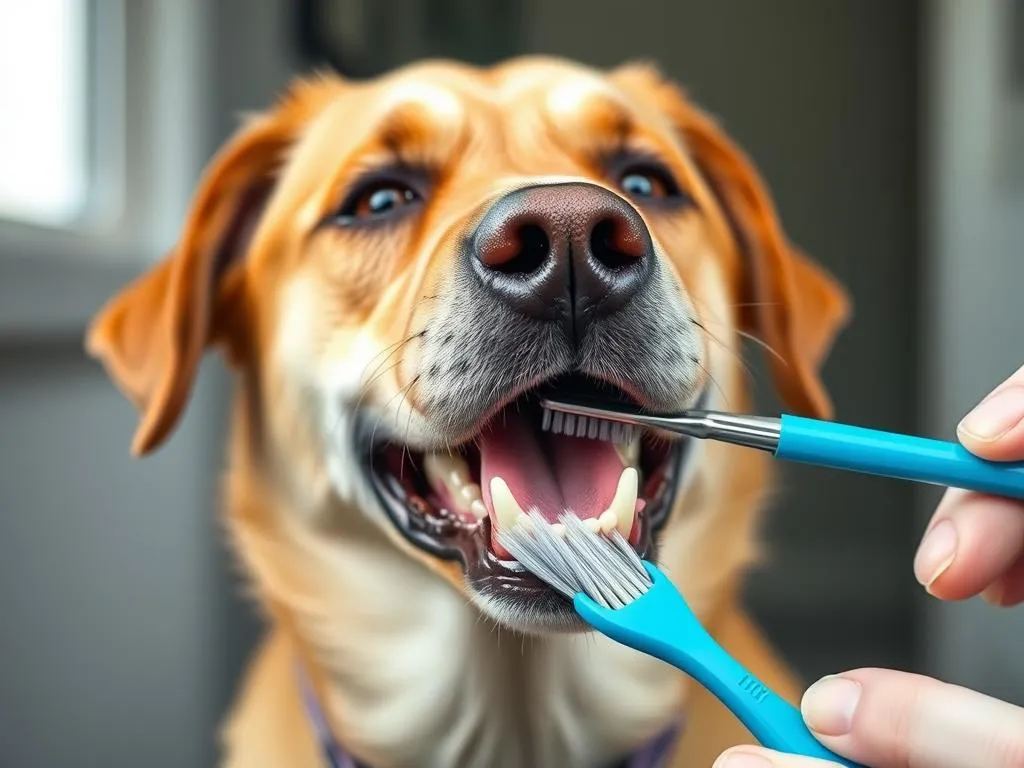
Introduction
Taking care of a dog goes beyond the basics of feeding and exercise; it requires a comprehensive approach to health care. Regular health care for dogs is essential in preventing common health issues such as obesity, skin conditions, and dental diseases. Among these, dental health is often overlooked, yet it plays a vital role in a dog’s overall well-being.
The significance of oral hygiene cannot be overstated. Just like humans, dogs can suffer from various dental problems that can lead to serious health complications if not addressed. This leads us to the central question: how often should you brush dogs’ teeth? Understanding the answer to this question is crucial for any dog owner dedicated to maintaining their pet’s health.
Understanding Canine Dental Health
The Anatomy of a Dog’s Mouth
A dog’s mouth is designed for its unique lifestyle, featuring a set of sharp teeth that help in tearing food. Adult dogs typically have 42 teeth, which include incisors, canines, premolars, and molars. Each type of tooth serves a specific purpose, contributing to a dog’s ability to eat and chew effectively.
Common dental problems in dogs include:
- Periodontal disease: This is the most prevalent dental issue, often caused by plaque buildup.
- Tooth fractures: These can occur from chewing hard objects, leading to pain and infection.
- Gingivitis: Inflammation of the gums due to poor dental hygiene.
Understanding these issues highlights the importance of regular dental care.
Importance of Dental Care
Maintaining dental health is crucial not only for preventing bad breath but also for avoiding more severe health issues. Research indicates a link between poor dental hygiene and systemic health problems, such as heart disease, kidney issues, and infections. When plaque and tartar accumulate, bacteria can enter the bloodstream, affecting vital organs.
Consequently, investing time in your dog’s oral hygiene is not just about fresh breath; it’s about safeguarding their overall health.
How Often Should You Brush Dogs’ Teeth?
Recommended Frequency
The frequency of brushing your dog’s teeth can vary based on several factors, including age, breed, and individual health needs. General guidelines suggest brushing your dog’s teeth at least two to three times a week. However, daily brushing is ideal for optimal dental health.
Veterinarians recommend that certain breeds, especially those prone to dental issues (like small breeds), may require daily brushing. For example:
- Small breeds (e.g., Chihuahuas, Dachshunds): Daily brushing is often necessary.
- Large breeds (e.g., Golden Retrievers, Labradors): Two to three times a week is often sufficient.
Consulting with your veterinarian can provide tailored advice on the best brushing schedule for your dog.
Signs Your Dog Needs Teeth Brushing
Recognizing when your dog needs brushing is essential for maintaining their dental hygiene. Look for these behavioral and visual indicators:
- Behavioral indicators:
- Bad breath: A strong, unpleasant odor could indicate plaque buildup.
-
Chewing habits: If your dog is chewing more than usual or favoring one side, it might be due to dental discomfort.
-
Visual signs:
- Tartar buildup: Yellow or brown stains on the teeth are warning signs.
- Gum inflammation: Swollen or bleeding gums indicate potential periodontal disease.
Being attentive to these signs can help you address dental issues before they escalate.
Best Practices for Brushing Your Dog’s Teeth
Choosing the Right Tools
Selecting the right tools is essential for effective brushing. Here’s what to consider:
- Types of toothbrushes:
- Manual toothbrushes: These are often more affordable and come in various sizes. Choose one that fits comfortably in your hand and is suitable for your dog’s mouth size.
-
Electric toothbrushes: Some owners prefer electric options, which can make brushing easier and more effective, especially for dogs that resist brushing.
-
Recommended toothpaste: Never use human toothpaste, as it can be harmful to dogs. Instead, opt for dog-specific toothpaste, which comes in flavors that appeal to pets, such as chicken or peanut butter.
Step-by-Step Guide to Brushing
Brushing your dog’s teeth can be a smooth process if done correctly. Follow these steps:
-
Prepare your dog: Start by letting your dog sniff the toothbrush and toothpaste. This helps them become familiar with the tools.
-
Choose a comfortable position: Find a quiet space where your dog feels relaxed. You may want to sit on the floor or place them on a table.
-
Techniques for effective brushing:
- Lift your dog’s lip to expose the teeth.
- Brush in a circular motion, focusing on the gum line where plaque accumulates.
-
Be gentle and avoid applying too much pressure, as this can hurt your dog.
-
Tips for a positive experience:
- Use praise and treats to reward your dog after brushing.
- Keep the sessions short initially to prevent stress. Gradually increase the duration as your dog becomes more comfortable.
Alternative Dental Care Options
While brushing is crucial, there are additional ways to support your dog’s dental health:
- Dental chews and toys: These can help reduce plaque and tartar buildup while keeping your dog entertained.
- Professional dental cleanings: Regular veterinary check-ups should include dental evaluations. Professional cleanings can remove tartar that brushing might miss, particularly in dogs with existing dental issues.
Common Myths About Dog Dental Care
Myth vs. Reality
Several misconceptions surrounding dog dental care can lead to neglect. Here are a few to clarify:
- Myth: “Dogs don’t need dental care.”
-
Reality: Just like humans, dogs require regular dental care to prevent serious health issues.
-
Myth: “Only older dogs need dental care.”
- Reality: Dental problems can affect dogs of all ages. Starting dental care early is essential.
The Cost of Neglecting Dental Hygiene
Neglecting your dog’s dental care can have significant financial implications. Treating dental diseases can be costly, involving professional cleanings, extractions, and medications. Moreover, the long-term health consequences—such as heart and kidney diseases—can lead to even more extensive and expensive treatments.
Additional Health Considerations for Dogs
Regular Veterinary Check-ups
Routine veterinary visits are essential for maintaining your dog’s health. During these visits, the veterinarian can perform professional dental evaluations and recommend appropriate care based on your dog’s specific needs. Additionally, regular vaccinations and preventive care can help avert various health issues.
Nutrition’s Role in Dental Health
Diet plays a significant role in maintaining your dog’s dental health. Certain foods can promote better oral hygiene. Here are a few tips:
- Foods that promote dental hygiene: Dry kibble can help reduce plaque buildup, while some specialized dental diets are formulated to support oral health.
- Importance of a balanced diet: A balanced diet not only supports dental health but also contributes to overall well-being, enhancing your dog’s immunity and longevity.
Conclusion
Maintaining your dog’s dental health is a vital aspect of overall dog care. Regular brushing, ideally two to three times a week or daily for certain breeds, will significantly benefit your pet’s well-being. By understanding the importance of dental hygiene, recognizing the signs of dental issues, and implementing best practices for brushing, you can help prevent serious health problems.
Establishing a routine for brushing your dog’s teeth can foster a lifelong habit that enhances their quality of life. Remember, regular veterinary visits and a balanced diet are also crucial in promoting dental health. Be proactive and make dental care a priority for your furry friend!









